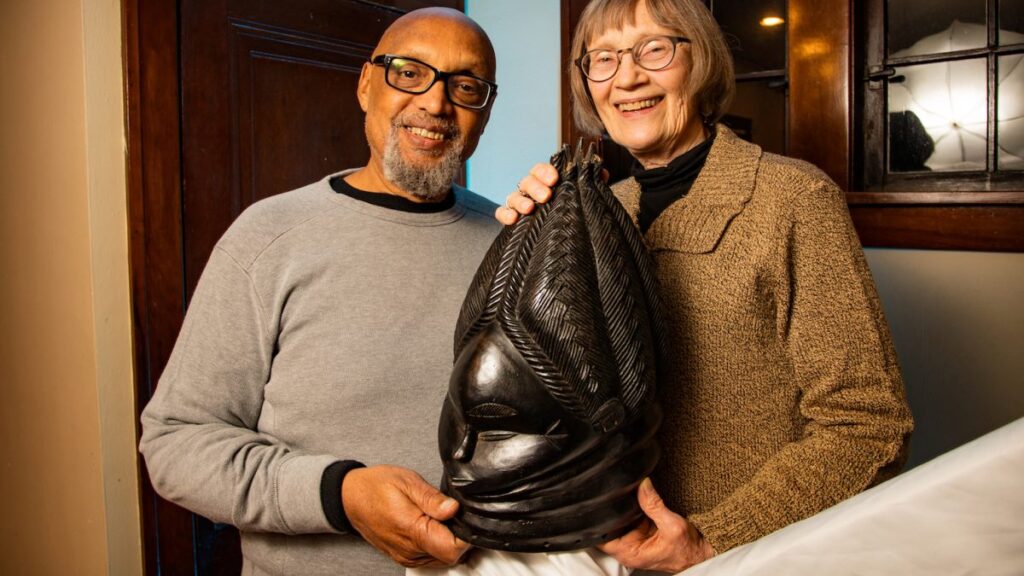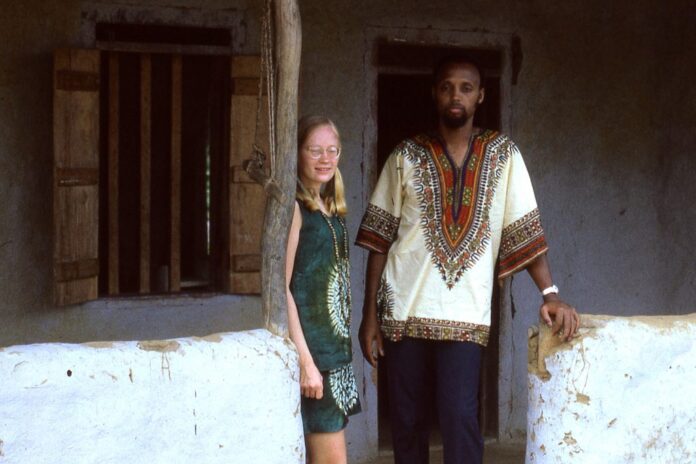Reggie and Celeste Hodges maintain their vast collection of African art by donating it to Ackland and other education-focused museums. Reggie and Celeste Hodges have a vision that the Triangle will be a place for African art, and that the Ackland Museum of Art will be part of it.
The Hodges’ passion for collecting African art originated during their time in the Peace Corps. Reggie began collecting combs and vessels, items he thought would be instructive when he returned to teach in the US. Word quickly spread, and students, neighbors, and friends began donating and selling pieces of African art to him.
Over the years of his work, Reggie has visited 35 of the 54 countries in Africa. He visited 200 rural communities annually. He met leaders and school officials, merchants, and students. Celeste was drawn to woven and hand-dyed fabrics, a process that is fast becoming a forgotten art.

Over time, the Hodges have amassed a unique and diverse collection of over 600 artifacts. Their collection of African art included wood carvings, textiles, masks and household items. These are all traditional items made by local craftsmen using handmade tools and local materials.
Reggie and Celeste also took hundreds of black and white photographs of classrooms, social dances, neighbors and friends. Their photographs reflect local food, agriculture and architecture and are of great interest to scholars and archivists.
The Hodges were in West Africa before the war. Ebola wreaked havoc in the region, which means that much of the art they so lovingly collected and sent home to the US was from villages and towns that no longer exist.
After their retirement, the Hodges gradually transferred parts of their collection to the local museums of the Triangle. Slowly but surely, they are helping to build the area’s potential as a place for African art.
The Hodges donated two masks to the Bund Ackland, where Reggie is a member of the National Advisory Council. The Hodges were also attracted to Ackland because of the way the museum of African Art uses its exhibitions for educational purposes, and also because it aims to increase its attendance.
“People don’t go to museums to look at African art in the same way that they look at art from European countries or Central America,” Reggie explained. “Much African art was created for functional or spiritual reasons and was never intended to be displayed on a wall or on a shelf.”

























